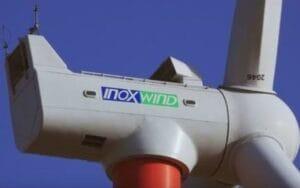1. At a Glance
ONGC just reminded the market that while the world chants “Net Zero by 2050,” India is still running on chai, diesel, and crude oil optimism. In Q1 FY26, they clocked ₹11,554 crore in profit, up 18.2% YoY — proving that fossil fuels might retire later than most PSU bureaucrats. Their sales dipped a bit (-3.5% YoY), but margins puffed up thanks to stable crude prices and an OPM of 16%, which is basically a flex for a company digging stuff out of the ground.
2. Introduction
Picture this: The world is investing in wind farms, solar panels, and hydrogen dreams, but ONGC — the grand old oil baron of India — is still out there drilling, pumping, and smiling at the dividend cheques it hands out to the government.
Born in 1956 and now straddling India like an oily colossus, ONGC supplies 71% of domestic crude and 84% of domestic gas. You don’t fill your scooter tank without their blessing. They’ve even got joint ventures spread like desi diaspora — Vietnam, Norway, Egypt, Tunisia, Iran, Australia — proving that crude diplomacy is alive and well.
Sure, sales growth over the last five years has been a sleepy 9%, but who cares when you’ve got a 5%+ dividend yield? It’s the corporate equivalent of your uncle who doesn’t run marathons but still shows up at every family wedding with a fat envelope.
And just when ESG investors were preparing to ghost them, ONGC pulled a PR masterstroke: a ₹4,963 crore plan for a 0.6 GW renewable energy project by 2028. Because nothing says “green future” like a solar farm paid for by oil money.
3. Business Model (WTF Do They Even Do?)
Let’s be real — ONGC’s business model is simple:find oil, pump oil, sell oil, repeat. But under the hood, it’s layered:
- Exploration & Production (E&P):The heart of the empire. Offshore rigs, onshore fields, and geologists with X-ray eyes for hydrocarbons.
- Natural Gas:A chunk of revenue comes from gas production and sales, with regulated pricing that occasionally makes them want to cry.
- International Ventures:Equity oil and gas from overseas blocks because importing your own
- product is peak PSU energy.
- Downstream Play:Through ONGC Videsh and stakes in HPCL/MRPL, they’ve got refining and marketing exposure.
Revenue is commodity price–linked, meaning profits swing harder than Sensex on Budget Day. High crude prices = happy PSU. Low crude prices = “Government, please help.”
4. Financials Overview
Quarterly Snapshot – Consolidated (₹ Cr):
| Metric | Q1 FY26 | Q1 FY25 | Q4 FY25 | YoY % | QoQ % |
|---|---|---|---|---|---|
| Revenue | 1,63,108 | 1,68,968 | 1,70,812 | -3.5% | -4.5% |
| EBITDA | 25,679 | 21,785 | 22,085 | 17.9% | 16.3% |
| PAT | 11,554 | 9,776 | 8,856 | 18.2% | 30.4% |
| EPS (₹) | 7.79 | 7.93 | 5.82 | -1.8% | 33.9% |
| EPS (Annual) | 31.16 | — | — | — | — |
Commentary:Margins fattened thanks to cost control and steady crude realization. QoQ jump in PAT is a mix of higher OPM and fewer “other expenses” draining the coffers. P/E at ~7.7 on annualised EPS — basically trading like it’s on a PSU clearance sale.
5. Valuation (Fair Value RANGE only)
Method 1: P/E Method
- Annualised EPS = ₹7.79 × 4 = ₹31.16
- Reasonable PSU Oil & Gas P/E range: 7–9
- FV Range = ₹218 – ₹280
Method 2: EV/EBITDA
- Annualised EBITDA = ₹25,679 × 4 = ₹1,02,716 crore
- Net Debt ≈ ₹91,000 crore
- EV/EBITDA range: 4.5–5.5 → FV Range = ₹230 – ₹281
Method 3: DCF (Super Simplified)
- Assuming ₹40,000 crore average FCF/year, discount rate 11%, growth 2% → ₹7.4–8.8 lakh crore valuation → FV/share ₹220 – ₹265
Educational Disclaimer:This FV range is for




















